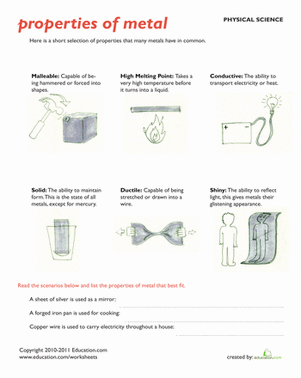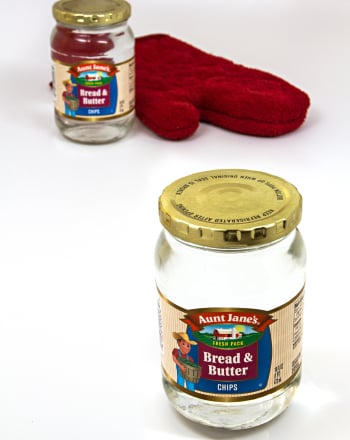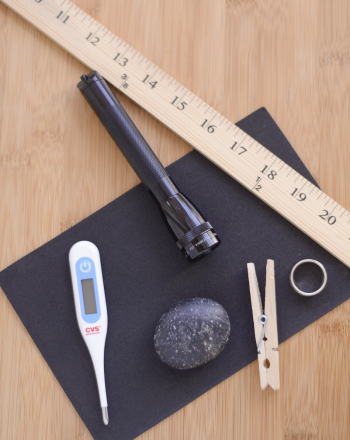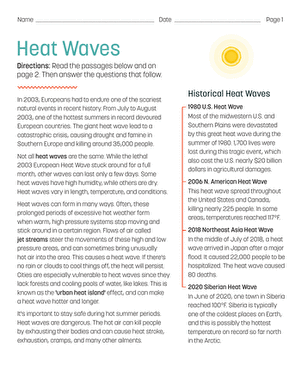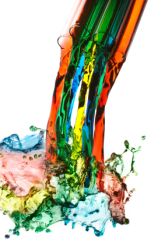Science project
Thermal Conductivity of Metals: Which Metal Is the Best Conductor of Heat?
Have you ever touched something that became hot enough to burn you only moments after it was cool to the touch? This can happen when you stir a pot of soup on the stove with a metal spoon or roast marshmallows over a fire with a metal rod. So what explains why it’s a better idea to stir your soup with a wooden spoon and roast your marshmallows with a wooden stick? Objects made of metal can quickly conduct unwanted heat right up to our hands!
So what is conduction, anyway? Conduction is heat moving from one object to another through contact. When heated, molecules in an object begin to shake and move. They also shake and move their neighbors, and the more molecules shaking, the more heat transfer happens. A good example would be roasting a marshmallow on a coat hanger or metal rod. As one end of the rod gains heat from the fire, the rest of the rod gradually heats up as well. Eventually, the whole rod becomes too hot to touch!
Problem
Which metal is the best conductor of heat: copper, steel, or brass? Why? After doing some online research, formulate your hypothesis.
Materials
- 3 12-inch long metal rods or thick wire: copper, steel, brass, or other metal. Make sure all the wires are the same gauge, or thickness. Why do you making sure the gauge is the same might be an important step?
- 8 identical Styrofoam cups
- Something to boil water in (a pot or kettle)
- Stove
- 4 instant digital thermometers
- Pitcher or other large container that will fit in the refrigerator
- Water
- Notebook and pen
Procedure:
- Fill a pitcher or other large container with water and ice cubes. Allow the water in the pitcher to cool for at least half an hour.
- Bend each metal rod in half two times to make metal bridges. Why do you think we should fold the rod in half twice? Would folding it once produce the same results?

- Place the cups in pairs. Three bridges of the same metal go between each cup. One pair of cups will have no bridges. This is the control group.

- Place the instant digital thermometers in each of the cups that will hold cold water.
- Have an adult boil some water. Let it cool a bit before use.
- For each pair of cups, pour equal volumes for hot water into the “hot” cup. Be sure the water covers the ends of the bridges.
- For each pair of cups, pour equal volumes of cold water into the “cold” cup. Be sure the water covers the end of the bridges. Why do you think the volumes of water need to be equal?
- Take the initial temperature of the cold water. Record the temperature in a chart listing the time (in minutes) and temperature (in degrees Fahrenheit).
- Record the temperature of each cold water cup every 5 minutes for a total of 30 minutes. Your table should have which set it is (none, copper, steel, brass), time, and boxes to fill in for temperature. Do you think that all of the heat that’s conducted away from the hot cup goes into the cold cup? Why or why not? Hint: sometimes heat doesn’t always go where we want it to!
- Which cup of cold water experienced the greatest change in temperature from the beginning to the end? Calculate this by subtracting the cup’s starting temperature from its final temperature.
- Organize your data with line graphs. On the x-axis, plot time in minutes. On the y-axis, plot temperature difference in degrees. By creating a chart like this, we can see which metal transfers the most heat overall. This also gives us some information about each metal’s conductivity: The steeper the slope, the higher the conductivity.
Results:
Of the three metals in this experiment, copper will transfer the most heat, followed by brass and then steel.
Explanation:
Copper has the highest heat conductivity value, while steel has the lowest heat conductivity value. Heat conductivity is a really important property of a material—we need to keep it in mind when we’re deciding what we’re going to use the material for! Here’s an example: Because copper is such a great conductor, we use it for things like heating rods and wires. Because steel is a poor conductor and can withstand high temperatures, we use it to build engines in airplanes.
Think back to when we folded our wire bridges in half twice. Why do you think we did this? Remember: conduction happens best when more molecules are in contact with each other. Folding the rod in half twice allows the heat from the hot cup to travel through more molecules, allowing more heat to travel from the hot cup to the cold cup. Folding the metal rods only once will still create a good heat bridge, but we would see a smaller temperature change in the cold cups, making it harder to see which metal is the best conductor!
As for the volumes of water needing to be equal? To get good data from our experiment, each hot water cup needs to hold the same amount of heat, and water has a very specific heat capacity. Heat capacity is how much heat energy it takes to change the temperature of a given amount of a substance. Think about it this way: all four of our cups have equal volumes of water at the same temperature, so that means that each hot water cup holds the same amount of heat energy.
So when heat conducts away from the hot cup, does all of that energy go through the metal bridge and into the cold cup? Not at all. Heat is often lost to its surroundings, and in this case, some of the heat from the hot water will be lost to the air. Similarly, the air in the room will lose some of its heat to the cup of cold water. We tried to minimize heat loss by using Styrofoam cups, because Styrofoam is known to be a great insulator—a material that’s a poor conductor of heat.
Further investigation:
Feel free to repeat this experiment with other metals! Metals like silver, gold, and aluminum will give you very different results. Just make sure that you keep all of the other conditions of the experiment the same.
Education.com provides the Science Fair Project Ideas for informational purposes only. Education.com does not make any guarantee or representation regarding the Science Fair Project Ideas and is not responsible or liable for any loss or damage, directly or indirectly, caused by your use of such information. By accessing the Science Fair Project Ideas, you waive and renounce any claims against Education.com that arise thereof. In addition, your access to Education.com's website and Science Fair Project Ideas is covered by Education.com's Privacy Policy and site Terms of Use, which include limitations on Education.com's liability.
Warning is hereby given that not all Project Ideas are appropriate for all individuals or in all circumstances. Implementation of any Science Project Idea should be undertaken only in appropriate settings and with appropriate parental or other supervision. Reading and following the safety precautions of all materials used in a project is the sole responsibility of each individual. For further information, consult your state's handbook of Science Safety.


